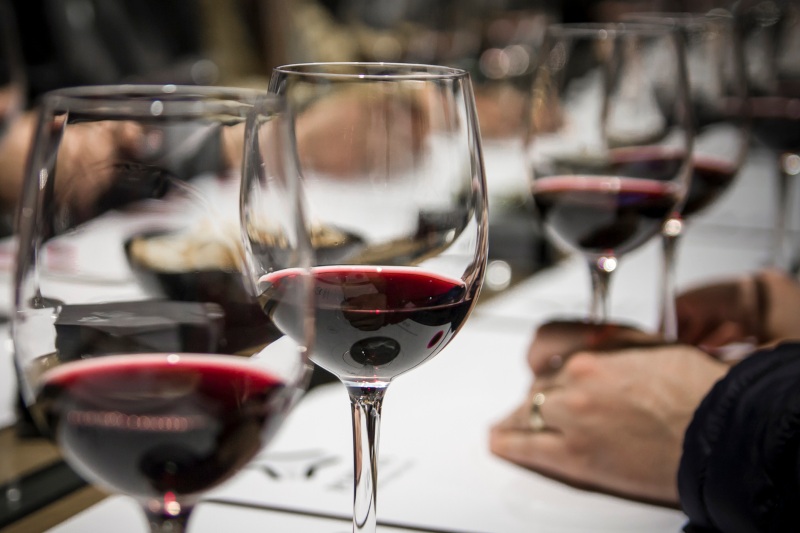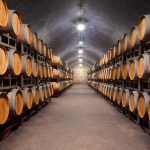Last updated on June 5th, 2020 at 12:22 pm.
Living in or visiting Spain and you are blessed with a huge choice of high quality wines at very reasonable prices. In this article we explain some of the main terms you’ll come across to help you spot good Spanish wine and enjoy it.
Wine in Spain
If you are a winelover then you’re definitely in the right place to make the most of your passion. Spanish wine covers every price range and every taste and you can make finding out about it a full time occupation if you wish.
Many Spanish bodegas are happy to take you on a tour of their premises and their vineyards. You can see first hand just how the wine is made there and something of the tradition that surrounds this amazing industry. There are estimated to be more than 4,000 bodegas or wineries in Spain and if you want to visit more than one bodega you might like to look out for a ruta del vino. This is a recommended route that you can follow to discover local bodegas and the history and tradition of a wine making region. If you do decide to take a bodega tour you might want to familiarise yourself with some of the vocabulary that you could encounter.
Spanish wine types and terms
You might come across the words crianza, reserva and gran reserva on a bottle of red wine. These are the terms used to describe how long a wine has been stored.
- Joven – ‘Joven’ means ‘young’ in Spanish and is a wine that hasn’t been stored in a barrel and if it has this will only have been for a short time. It should be consumed within a year. A young red wine from La Rioja is called cosechero.
- Roble – Roble is a category of wine that is somewhere between el joven and el crianza.
- Crianza – To belabelled as ‘crianza’ the wine should have spent at least six months in an oak barrel and have been aged for 24 months.
- Reserva – To be labelled as ‘reserva’ the wine should have been aged for three years and one of these years must have been in an oak barrel.
- Gran Reserva – Wines that have the ‘gran reserva’ label should have spent a minimum of 18 months in oak and have been aged for 60 months.
Grape variety
There is a huge variety of grape grown in Spain for wine production. Some of these grapes are native to the country but others have been brought in due to their popularity. Below are some of the most well-known Spanish varieties.
- Tempranillo grapes – These are considered to be one of the top varieties of red grape and are used to make Rioja, Ribera del Duero and wines in 36 other authorised regions. It only used to be cultivated in La Rioja but is now grown across Spain.
- Airén grapes – These grapes are perhaps the top white variety and are native to Spain. They represents about 30% of all the grapes grown and are particularly prevalent in La Mancha. The wine from the Airén grape is light, aromatic and fruity.
- Monastrell grapes – These grapes are popular in many parts of the Mediterranean including Murcia, Alicante, la Provenza, the Ballearic islands and Ródano in France. They produce a powerful, strong wine because the grape contains alot of sugar which changes into high levels of alcohol after fermentation.
- Bobal grapes – We had to include the Bobal grape as it is found mostly in Valencia. It produces a full bodied and colourful wine and, we are told, there has been a significant increase in quality in recent years.
- Moscatel grapes – This grape is cultivated close to the sea, mainly in the area of Marina Alta in Alicante. The vines benefit every day from the Mediterranean breeze producing a white wine with character that’s aromatic and with a smooth taste.
Quality control to find good Spanish wine
DO (Denominaci6n de Origen) indicates the area where the wine originated from. Each area is responsible for awarding DO status and it is expected that a vineyard is only allocated the status as a result of quality control.
There is an ascending order of quality that includes:
- Vino de mesa – basic table wine made in an unclassified vineyard that could be blended and doesn’t have vintage or grape variety recorded
- Vino de la tierra – a table wine that is linked to a particular area and shows vintage and grape variety
- DO – wines made within very specific areas controlled by Consejos Reguladores or regional regulating councils
- DOCa – originally a distinction intended for the top wine producers and used particularly in Rioja. This category is for wines of high quality and Rioja was the first to be given DOCa status in 1991.
Recial mentions
Here are a few types of wine that are perhaps deserving of a special mention.
Cava
Cava is a sparkling wine and so makes its way onto this list. It’s often used instead of champagne being a cheaper option, although you can still get more expensive bottles of cava too. Most cava is dry (Brut) but you can also get semi-seco which is for those with a slightly sweeter tooth.

La Rioja
This is perhaps the most famous of Spanish red wine and comes from the region in the north-central part of the country. Traditionalists prefer that antique American oak barrels are used whereas there is also now a more modern preference for new oak barrels from France.
Ribera del Duero
This wine is required to contain at least 75% tempranillo grapes. One of the most expensive and one of the best Spanish wine comes from the Vega Sicilia winery and Pingus winery which are in this region.
Rueda
This wine is produced in the Castilla y Leon wine-growing region and the main grape used is the Verdejo. It is one of the most famous white wine from Spain.
No comments yet
There are no comments on this post yet.






Leave a comment